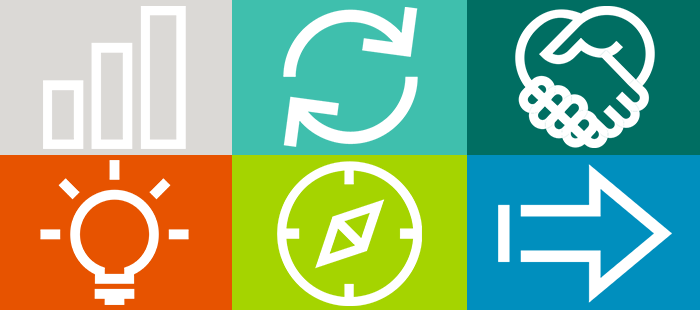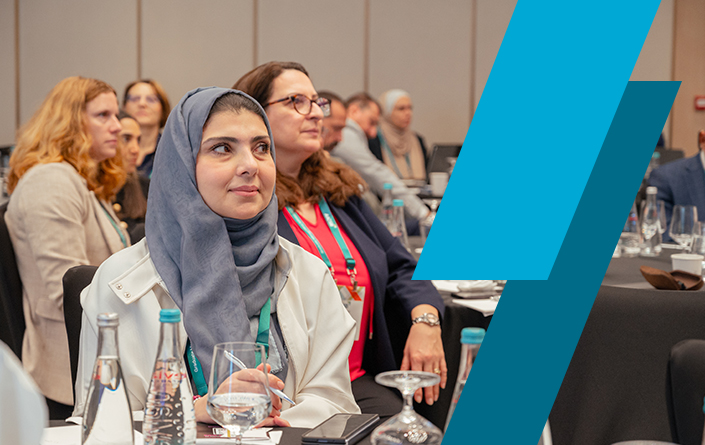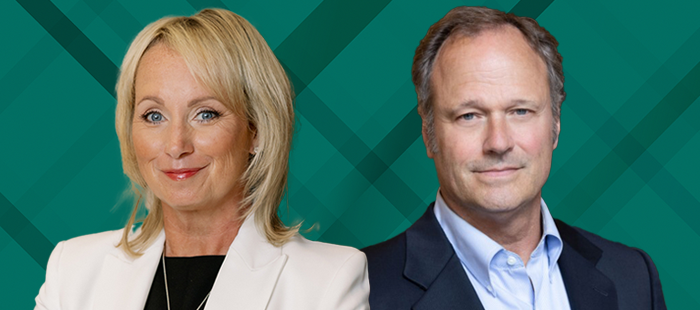A Model for Cultivating Personal Growth
- According to scholar Maja Djikic, the ways that many professionals and academics pursue personal success and fulfillment are not effective or realistic.
- When people attempt to make changes in their lives, most focus on changing behaviors. But effective personal development encompasses all five aspects of self: mind, body, motivation, behavior, and emotion.
- People can achieve lasting change in two ways—by managing all five aspects of self or by transforming them. Transformation is more difficult, says Djikic, but far more fulfilling.
Four years out from the first days of the pandemic, professionals across all industries still are reeling from ongoing technological, political, and sociological disruption. With so many external factors affecting their professional and personal lives, it can be easy for them to overlook internal factors that could lead them to personal success and transformation.

|
| The University of Toronto’s Maja Djikic |
Helping individuals realize such personal transformation is a passion for researcher Maja Djikic, associate professor of organizational behavior and human resources management at the University of Toronto’s Rotman School of Management. As director of Rotman’s Self-Development Laboratory and academic director of its Executive Coaching Certificate program, she works not only to help organizations succeed, but also to show individuals how they can design better lives for themselves.
That is the focus of her book, The Possible Self: A Leader’s Guide to Personal Development. In it, she delves into mindsets and misconceptions that can keep people “stuck” in their lives and careers and the strategies they can use to achieve greater self-fulfillment.
Djikic recently shared her perspective on this topic with AACSB Insights. Here, she explains how her personal development framework might help business leaders, academics, and others beat burnout, overcome a sense of stagnation, and design lives that reflect their greatest aspirations.
Your educational background is in human biology and psychology. What drew you to apply your training to organizational behavior?
It was the opportunity to bring my theories about human development to working professionals. They tend to have real-life problems and high expectations; they care little about p-values and a lot about whether their lives change for the better.
Before I moved to the Rotman School of Management, my research consisted entirely of classical experiments, with university students as participants. The strictness of the experimental method and the ability to isolate variables are useful in experimental work, but without real-life application, the work was starting to feel abstract and sterile.
When I had the opportunity to start the Self-Development Lab, there was a lot of excitement, and admittedly some trepidation, about having my hypotheses tested in real-life settings. Yet once I was there, true cross-pollination took place. The professionals I worked with kept asking difficult questions that sharpened my thinking about personal development in adults. Their questions, comments, and experiences provided the missing pieces of a puzzle that I never could have discovered in an experimental lab.
The Possible Self is aimed at people who feel personally stuck despite professional success. What inspired you to write this book?
Both academia and the business world abound in successful individuals who have prestige, resources, safety, agency, and privileges that outpace those of the rest of the working world. It would not be strange to assume that these individuals, with all their “Maslowian” needs taken care of, would be deeply personally fulfilled and excited about their lives.
Yet, few tenured professors and business executives hover on the edge of self-actualization. Many who aspire to enter the rarefied world of academia and business would be surprised at the level of stagnation and suffering that they will find there. To me, this paradox was worth exploring because it showed me that the usual way we think of success and personal fulfillment is not realistic.
In your book, you say that there is a common misperception that our personalities are set in stone by adulthood—that by then, they cannot be fundamentally changed. How elastic are our adult personalities, and why do you think people tend to get stuck in this limited view?
We are very elastic. We can think of personality as an early skill of navigating our environment given our physiology (“temperament”) and our interests (“potential”). We may have easily learned the skill of agreeableness as children because it was encouraged by our caregivers. This doesn’t mean we have an “agreeable” personality and can’t be assertive. We can learn the skill of assertiveness, too. Our development usually lies on the opposite pole of our early traits.
For the sake of stability, we become complicit in a social contract that says, “I’ll stay in my box if you stay in yours.”
I think we get stuck because we identify with our early traits, which we have had for so long that they feel like, “This is who I am.” We may also identify with our profession or other groups to which we belong, which provide us with a sense of illusory stability.
It doesn’t help that others prefer to deal with us when we are in these boxes. For example, employers prefer to hire people who are in the “dependable, hard-working” box, and we like to have predictable relationships with our friends and partners. It becomes inconvenient when they change—we have to rebuild the relationship. So, for the sake of stability, we become complicit in a social contract that says, “I’ll stay in my box if you stay in yours.”
Do you believe that the pandemic has increased people’s willingness to prioritize their own self-development and self-care?
I think the pandemic has shaken people’s belief that their lives are “set” into a pattern and that that pattern can’t change. The pandemic also forced us to think of our colleagues, students, and staff as whole people rather than focusing only on the part of themselves they bring to work or school. We had to consider sudden shifts in home configuration, loss of social support, and stresses and losses due to illness and death if we were to help those who felt overwhelmed, lonely, or stressed. This led us to collectively discover a language of self-care that transcended the work/home barrier.
You refer to a person’s “Wheel of Self,” which features five aspects: mind, body (which stores the effects of past experiences), motivation, behavior, and emotion. But you also point out that when people try to transform themselves, most focus solely on behavior. Why do they look only at behavioral change, and how much does that hinder success?
Behavior is the most visible of all five parts of the self. We can see what someone does, but we can’t always see their emotions, thoughts, motivations, or history. Behavior is also measurable, which, as we know, is highly valued in organizational settings.
The problem is that by trying to change just behaviors, we break ourselves and others. Let’s say we decide to wake up at 5 a.m. every morning to write our research papers. If we force the behavior while our motivation, emotion, and thoughts are pulling us the other way, we eventually run out of willpower and simply stop writing.
If we implement an organizational change and ask people to follow a process they don’t agree with, they may do it (to keep their jobs), but their negative motivations, thoughts, and emotions about it will spill all over the organizational space. Behaviors may be good indicators of the state of the whole self-system, but they are terrible levers of intervention.
How does one leverage all five aspects of self to achieve personal transformation?
There are two ways. First, you can manage them—that is, you analyze your core desires, learn how to keep your willpower “cup” full, process emotions effectively, remain open to new information, and continually adapt your learnings to an ever-changing world.

|
| Djikic’s Wheel of Self framework |
Or you can transform them. This is more difficult but far more fulfilling. It involves examining what aspect of your life may be stagnating and then applying given tools across the five parts of the self to get the stalled Wheel of Self into motion.
You describe this transformation as one that turns the “Wheel of Self” into a “Wheel in Motion.” How can people at all levels of their careers initiate this process, while they also try to navigate the stresses they face in their professional and personal lives?
I think it’s difficult not to feel suffocated under mountains of work and responsibilities to various stakeholders in our lives. We each hold various roles—of dean, professor, student, parent, child, employee, volunteer, and community leader. But while these roles help us and others understand our responsibilities and expectations, who we are is the person who lies underneath all the roles.
This is why it’s so important to step away from our roles once a day, even for just 15 minutes, and get to know that person. If we don’t, we risk losing contact with ourselves in the scramble of numerous expectations and responsibilities. It’s important not to lose the thread that leads us to ourselves.
What steps can leaders and others with stressful work take to make self-care less overwhelming, so that they can avoid burnout and set themselves up for greater long-term success?
Burnout is not simply a condition of having too many difficult things to do. It’s also a condition of doing too many things that we don’t want to do (which drains willpower) and doing too few things that we want to do (which restores willpower). Not to mention, we don’t necessarily get drained at work and restored at home. We can restore ourselves at work, too, if we figure out how to turn our work into something we want to do.
Professionals need to examine whether there are structural drainers they experience—for instance, certain types of meetings, committee service, or work obligations—that they can restructure, delegate, or reframe successfully. Next, I’d advise them to think of what “pours into their cups” at work and home and try to insert as many such restorers as they can throughout their day. Being able to restore themselves at work would transform their energy balance sheets.
Many academics feel as if they must publish research in high-impact journals to earn tenure, but they often find that such research is not personally fulfilling. How would you advise individuals who face similar dilemmas?
This choice between personal development and “survival” motivations is one of those cardinal intrapersonal conflicts that only humans experience. It’s unfortunate that things that help us grow don’t always bring about success, and vice versa.
If we subjugate our development to success, we may have resources, prestige, and societal approval but will feel stagnation and existential suffering as we ignore our developmental potential. On the other hand, if we subjugate success to development, we’ll live each day with the excitement and joy that comes from development, yet we will face survival fears.
Burnout is a condition of doing too many things that we don’t want to do and doing too few things that we want to do.
Academics can try to optimize both motivational systems by pivoting gradually toward topics that interest them while also capitalizing on their past expertise and prior research. It’s impossible to know in advance whether such departures and explorations will lead to new and exciting lines of research or to tenure. But it’s on each of us to carefully weigh the scales of survival and development and accept the consequences.
How does the Rotman School encourage students to adopt the self-care and self-development strategies you describe, so that they will not find themselves in unfulfilling career or personal situations later in life?
While we support students’ mental health and wellness through various programs, we also have our dedicated Self-Development Laboratory, where our students learn what self is—how it develops, how it gets stuck, and what tools they need to get it moving again. They learn how to differentiate success versus fulfillment, process their emotions, and address inner obstacles that show up in the classroom such as low confidence or poor communication skills.
In our lab, we don’t use personality tests. Instead, we help students understand the trajectory of their unique potential. We try to help them leave their boxes behind and learn skills for lifelong development.
How have you put your research findings to work in your own life and career?
I’m very alert to the loss of joy accompanying stagnation and stuckness in various aspects of my life. For example, in my professional life, I have twice pivoted to a new field of study after suffering exhausted interest and stagnation. I started my academic career studying the damage self-deception causes to our development. Next, I studied how art such as literature, music, and painting can lead to transformative change. Finally, I turned to the paradox of why adults remain stagnant despite their success, and I have worked to build a new model of adult change.
If we have the right tools of inner change, we don’t need to be afraid of stagnation. We can use it as an incentive to change.
As I look back, these themes seem connected to the idea of what helps and hinders developmental change. But in each moment of change, it certainly seemed like a leap. To take those leaps, I had to do the inner work and restart some aspects of self that had gotten stuck.
You advise us to view our personality traits not as “boxes in which we had better get comfortable,” but as “plateaus from which we continue to grow.” What does that look like over a lifetime?
It looks like being continually alert to our changing interests and passions and pivoting toward development and growth. It also means getting used to leaving the comfort of our “old selves” behind, which requires lots of courage.
Once in a while, we also need to stop to see if we notice any red flags of stagnation: envy, continual comparison with others, the sense that we are falling “behind schedule” in our lives, and immaturity. If we have the right tools of inner change, we don’t need to be afraid of stagnation. We can use it as an incentive to change.
Finally, it’s important not to place a limit on our growth. We don’t stop growing when we retire or reach a certain age. We can develop throughout our struggles, until our very last breath.





